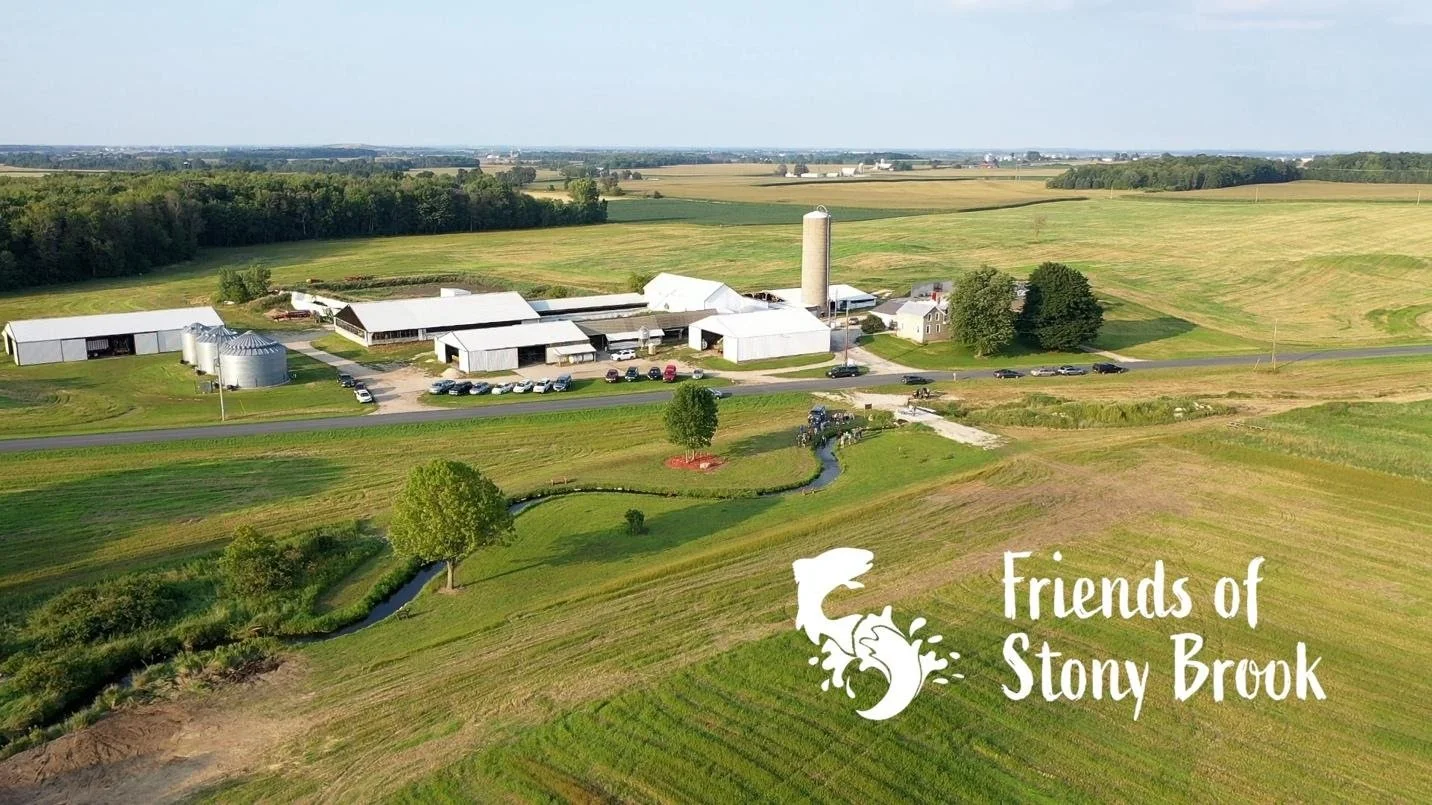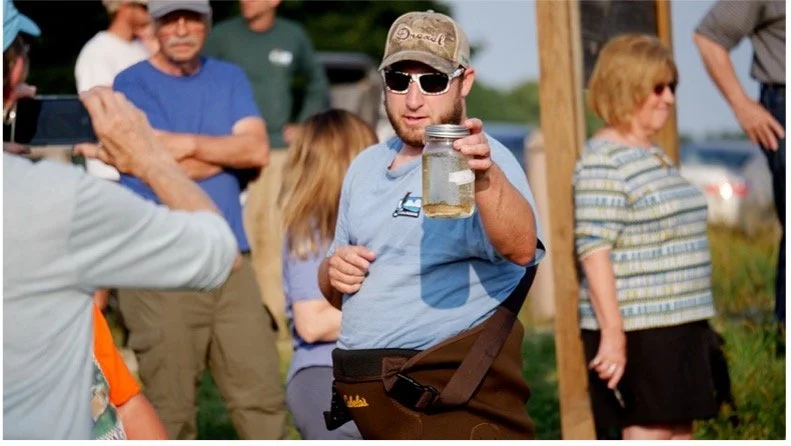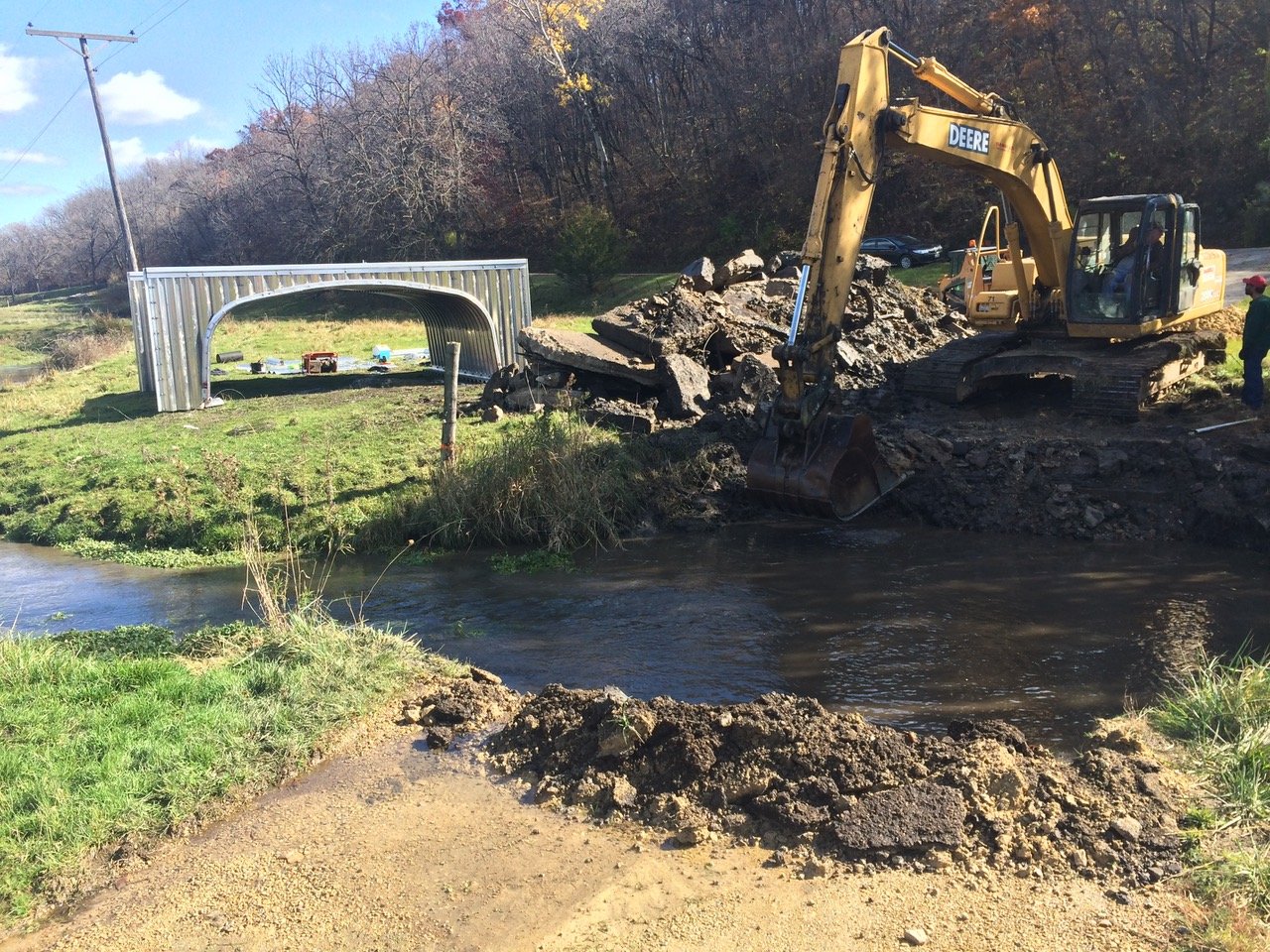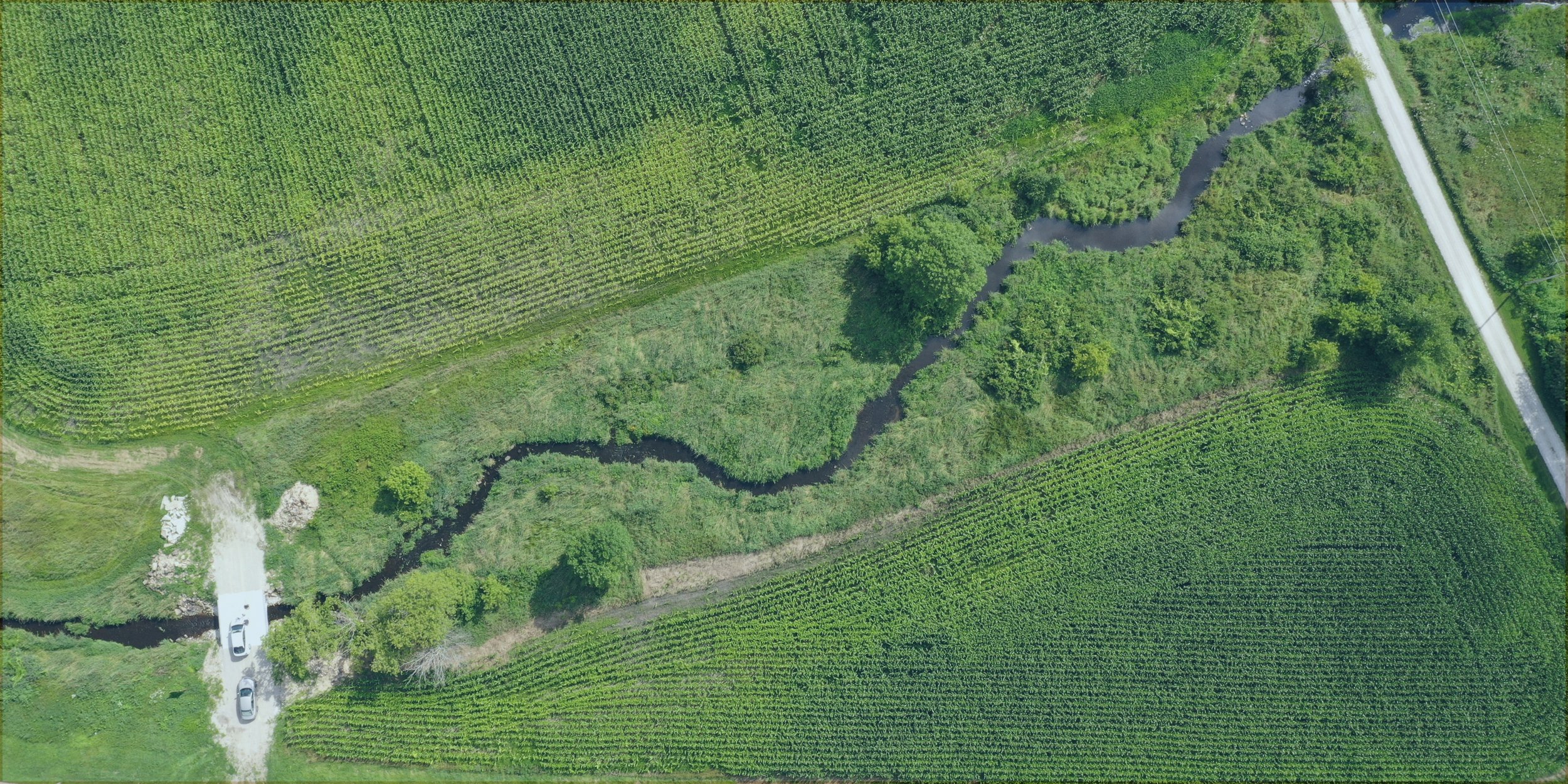Partner Profile — Friends of Stony Brook
This image shows Stony Brook after the completion of the tractor crossing and other improvements.
The Friends of Stony Brook held its first field event Wednesday, August 18 showcasing some of the restoration work that has transpired on the Tim Sohrweide property. Since 2016, students from the Chilton Area School District have been rearing trout in the classroom and releasing them into the section of Stony Brook Creek adjacent to the Sohrweide farm. To date, over 1000s fingerlings have been released by local students, many of whom live in the Stony Brook Watershed.
Adam Nickel, DNR Senior Fisheries Biologist, showing a “young of the year” catch while monitoring Stony Brook.
Fisheries and habitat staff with the Wisconsin Department of Natural Resources (WDNR) were on hand to demonstrate the 500-foot restored section of the stream. The WDNR Habitat Crew re-meandered the channel, adding riffles, pools, and lunker structures last year in hopes to provide the stocked fish a healthy habitat. The fish crew provided an electrofishing demonstration at the event, where large brown trout were pulled from the “lunkers” and later measured for length and tags. The largest fish, recorded at over 17 inches, was a brown trout. But more surprisingly, the little trout were the stars of the show. The “young of year” trout caught on Wednesday are proof that Stony Brook is now naturally reproducing. This is the first time in decades that the WDNR has documented natural reproduction in Stony Brook, Calumet County’s only trout stream. Since COVID prevented stocking class of 2021, the WDNR believes the little fingerlings came from the stream itself.
The story of Stony Brook is now going into its sixth year. When the Chilton School District started rearing the trout in the classroom, the teachers needed to find a stream to release the fish. Brad Bowman, a [former] guidance counselor with the middle school and self-described “trout bum” partnered with Joe Bach, another member of the Trout Unlimited – Fox Valley Chapter, to find a location. Bach knocked on Tim Sohrweide’s door, and the rest is history.
The student project led to water quality monitoring by both WDNR and Bach, who is a citizen monitoring through Wisconsin’s Wave Action Volunteers (WAV) program. Results indicated that the temperature was cold enough to sustain a trout population, and there were a ton of “bugs” or aquatic invertebrates which trout feed on. The habitat was the biggest concern and calls for instream work began to take shape. Bach reached out to the Lakeshore Natural Resources Partnership (LNRP) and the Calumet County Land and Water Conservation Department (CLWCD) for help to fund the habitat work.
A photo mid-construction of the Pingel culvert installation on Stony Brook.
LNRP was awarded a grant from the Fund for Lake Michigan to start the first phase of the project. The Sohrweide tractor crossing, which was found to be impeding flow and causing flooding and soil erosion, was replaced with an open bottom culvert, allowing the stream to move and shift during heavy rain events, as well as reduce cropland flooding. The Fund for Lake Michigan funding also helped pay for the WDNR Habitat Crew to install lunker structures and stabilize the banks to prevent further erosion.
Recognizing the momentum of the school’s program and the property enhancements of the Sorhweide Farm, Bach started knocking on neighbors’ doors to gain support for future habitat projects. To date, five property owners have provided access to Trout Unlimited to do future work through donated conservation easements, with several others interested in similar work. Project partners formed the Friends of Stony Brook Creek to help organize the continued efforts through a Wisconsin DNR Surface Water Grant awarded in the Spring of 2021. Wednesday’s event was a kick-off celebration of that group.
So, what’s next for Stony Brook? This year, a second culvert was replaced just upstream of the Sohrweide section, which was likely causing sediment to clog the stream. Another 500-foot section will be restored downstream of the Sohrweide tractor crossing in October. The Trout in the Classroom program will continue to stock brown and brook trout in 2022. Planning is also underway to relocate a 600-foot section back into its natural stream corridor where it was moved over 80 years ago to make room for cropland. Partners are hoping to secure funding and permits for this project to start in 2022.
This image shows Stony Brook during the construction of the tractor crossing and other improvements.
If you would like to learn more or keep up to date with the projects, please connect with the Friends of Stony Brook. The group has a Facebook account and is set to launch a website this fall. In the meantime, please reach out to Dani Santry at 920.849.1493 ext 2402 or danielle.santry@calumetcounty.org.
Related Links:
Friends of Hika Bay Profile on LNRP’s Website
Friends of Stony Brook Website
A Look Back… and a Look Forward with Tom
Project Update — Autumn Beach Cleanups, Friends of the Manitowoc River Watershed
Project Update — Sheboygan Water Trail News
Project Update — Restoring Amsterdam Dunes with LNRP Partners
Welcome LNRP’s New Director of Partnerships and Programs
Ward Award for Invasive Species Control Launched by LISMA




